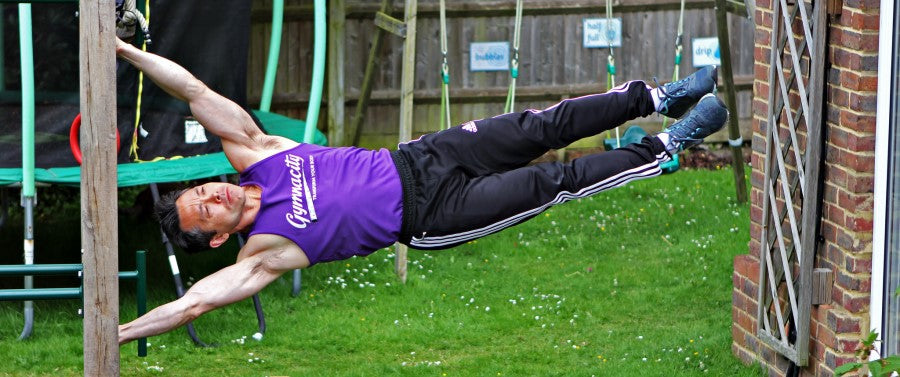
The Secret Behind Why Modern Synthetic Ice is So Slick
One of the biggest struggles hockey has faced since its invention has been figuring out how to play hockey during warmer seasons. Winter is a wonderland for hockey players because just about anywhere they go, assuming they’re in the right place geographically, they can find a frozen pond to skate around on. Once spring rolls around and it starts to get warmer out, things start to thaw, and playing hockey is a little trickier. One solution has been synthetic ice. Synthetic ice has been around since the 1840s and it’s improved quite a lot since then, but how has it been able to do so?
Many people have a vested interest in making hockey easier to play during the warmer months because, well, they play the game themselves or it’s something that someone they love likes playing. Technology and our understanding of science keeps improving, so synthetic ice has continued to improve as well. Let’s take a look at the journey that synthetic ice has taken since its creation up until this point in time.
The Humble Beginnings of Synthetic Ice
In the early 1840s, two men by the names of Henry Kirk and William Bradwell put their heads together to create and patent the first form of synthetic ice the world had ever seen. Kirk was the inventor of this synthetic ice, and Bradwell was an architect. Kirk filed his patent for his Substitute for Ice Skating and Sliding Purposes, and they began their first exhibitions. This was the first ever instance of a rink of any size made up of synthetic ice. Their ice was made of a chemical compound that contained no water, which made it even more interesting at the time.
Their first exhibition was at a nursery near Dorset Square. They had the intention of showing their invention to investors in hopes that they could have a permanent attraction that would be open to the public, assuming that they had the funds to get in the door. This, unfortunately for Kirk and Bradwell, didn’t go the way they expected. They failed to secure any funding with their first attempt. This would not be their last attempt though.
Shortly after their first failure, they went on to do another exhibition at Regents Park, where they managed to secure a small investor to help them achieve their goal. With that funding, they opened up a 3000 square foot rink in the middle of Portman Square. It was decorated with paintings and even had a live band playing for the skaters. This was a hit among the public, but only for a short time. Before too long people lost interest, and they had to close down this rink.
In 1876, another synthetic ice rink was created in Chelsea. This time the synthetic ice was created with water. The way that this worked is that they would flood a room with copper pipes at the bottom of it. It only took about 2-3 inches of water to flood it to the proper depth. Once the room was flooded, they would release a combination of ether, glycerin, and water to freeze the flooded room. The craziest thing about this is that it worked… kind of. It worked well enough for two more rinks to be opened exactly like the first one, at least, but there was a major issue with this system.
A side effect of the chemical reactions that were freezing the water made the room almost unbearably cold. The ice in the rink was also incredibly cold, so cold in fact that any skaters that braved the rink had to deal with thick plumes of mist rising up. That meant a lot less visibility for the skaters, which made skating an ordeal, to say the least. Oddly enough, one location that used this technology managed to stay open for ten years before it finally had to close its doors. It would be almost a century before humanity saw synthetic ice again.
A Synthetic Ice Revival

In the 1950s, American chemical company DuPont was tasked with figuring out a way to create synthetic ice for hockey players. They had done their research and found out about the two attempts in the past, and decided that Henry Kirk had the right idea when he decided that he didn’t want to use any water in his mixture, so while he never saw any financial success from his endeavor, he was still able to make a difference in the future of synthetic ice.
The way that DuPont saw it, they needed to make something that would be impossible to melt within reasonable temperature ranges, and so that’s what they set out to do. It wasn’t long before they created their first synthetic ice. It was made of polyoxymethylene plastic, which wasn’t perfect. The biggest flaw that people saw with it is that you couldn’t glide, and a silicone lubricant needed to be used in order for it to be workable at all.
It wasn’t until the early 1980s that we would start to see synthetic ice in interlocking tiles as we see them today. When the tiled synthetic was first created, its biggest selling point was that all you needed to do was remove the tile, spray it down with the lubricant, and put it back once a month. It could also be used for other sports when not using it for hockey, which made it a big hit among multi-purpose sporting centers.
Saying that synthetic ice got big might be a bit of an understatement. The concept of having a skating rink even in states and cities that don’t have the proper climate for such a thing thrilled thousands of people. Having synthetic ice meant you could even open a year-round outdoor skating rink in California and not think anything of it. Of course, it had its shortcomings, but that was a trade-off many people were willing to make.
The Current State of Synthetic Ice
Time continued to pass, as time does, so of course, more research and development was done on synthetic ice. It was clear to everyone that was paying attention that synthetic ice was going to be a real cash cow in the right communities if done correctly. There was a high demand for high-quality synthetic ice that can be used in any climate. After all, the demand had clearly been demonstrated since the last major advancement. People were clamoring for more and more advanced synthetic ice that could be skated on without as much drag as the synthetic ice that they knew. The goal was to make a synthetic ice that could match true ice as closely as possible, and probably make a killing in the process.
At this point, it gets a little trickier to pinpoint exactly where each bit of progress came from because everything started happening a lot more quickly. Before long polymethylene plastic was replaced with high-density polyethylene, which was able to provide a much higher glide factor than its predecessor without using as much lubricant to make it happen. Even with this change in materials, they still used that same interlocking tile format because it truly was easy.
High-density polyethylene was the most advanced material used for synthetic ice for a very long time, and any time you skated on synthetic ice you could be sure that that’s what it was made of. That is, until very recently.
As you probably know from simply existing, people are always trying to make things better and better. Synthetic ice is no exception to that. If a company could come up with a better way to make synthetic ice, they could stand to make a whole lot of money. Research and development continued, and then recently some manufacturers started using ultra-high-molecular-weight polyethylene to make their synthetic ice. Sometimes synthetic ice made of this material even outperforms true ice’s glide factor by up to 10-15%.
If you go skating on a synthetic ice rink today, odds are that they’re using either high-density polyethylene or ultra-high-molecular-weight polyethylene. While the latter may have a higher glide factor, you can still tell that you aren’t on real ice. With technology as it is now, you still can’t beat true ice.
The Future of Synthetic Ice
It’s unlikely that people will stop trying to make synthetic ice better and better. That’s one of the most beautiful things about people, we have a tendency to refine things until they’re perfect. Right now it’s hard to say exactly what the future of synthetic ice will look like, and who knows what kind of developments they’ll come up with next. It’s possible that in the next ten or twenty years they’ll actually come out with a synthetic ice that’s better than true ice in every way possible. Or maybe we’ll hit a plateau and it will be impossible to further improve upon at some point. Either way, it will be very exciting for every hockey player to see.



